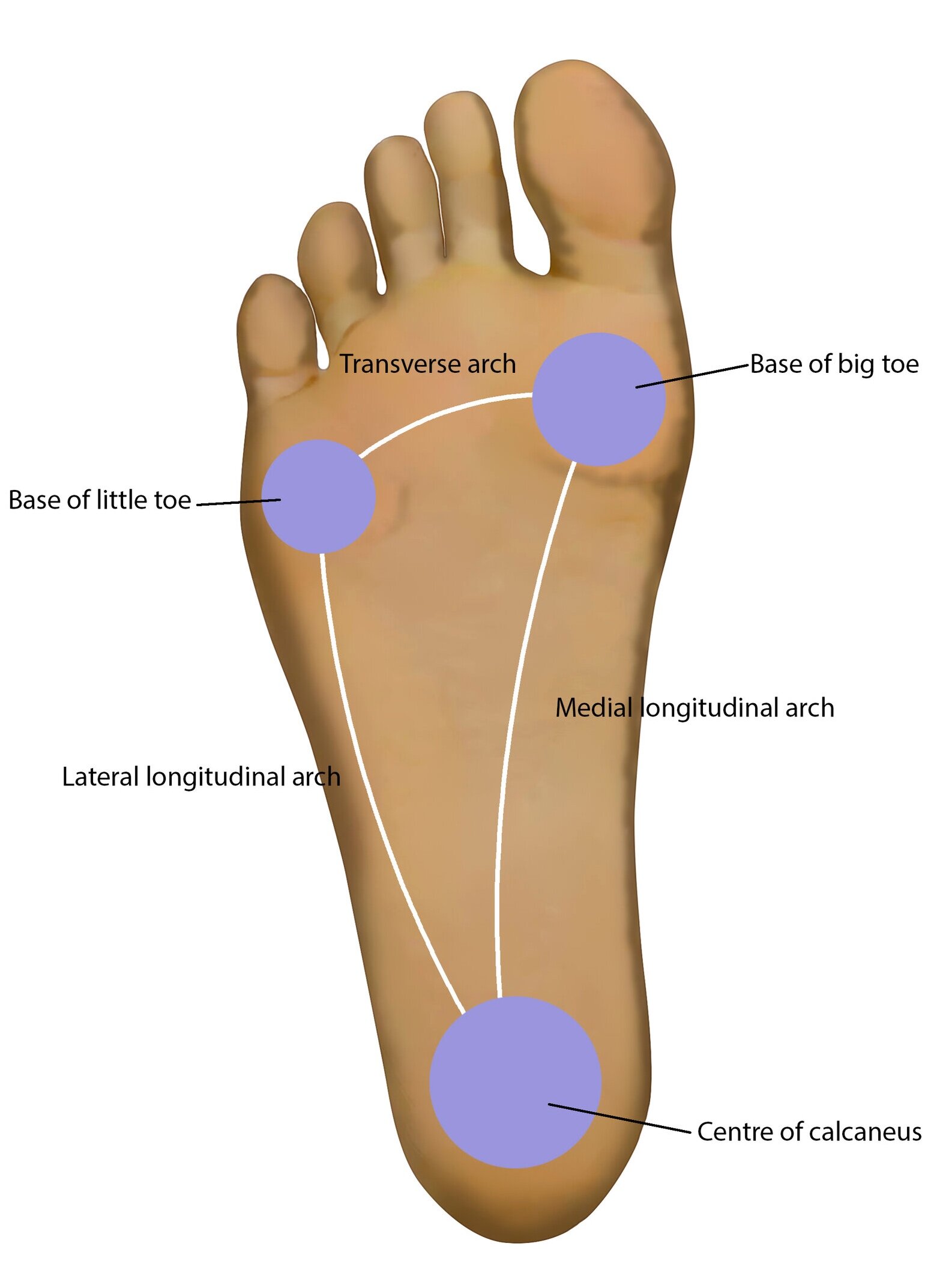Your feet
Olivia Marley
We've started this year by focusing on feet. There are two techniques we've been working with: firstly, imagining three main points of contact between the sole of your foot and the floor (the base of your big toe, the base of your little toe and the centre of your heel) and feeling how the weight is distributed across those three points. Secondly, trying to feel the arches in your feet - particularly your inner arch (on the image here called your medial longitudinal arch) and outer (aka lateral longitudinal) arch and seeing if we can engage the tissues in the arches of your feet. If you’re not sure what it feels like when your arches engage, try this: place your foot on a tea towel or small cloth. While keeping your toes and heel on the cloth, try and scrunch the cloth up using your toes and then flatten it again. Keep doing that for perhaps 30 seconds or so and see if you start to feel the muscles in the sole of your feet switching on. You can also try rocking your weight from inner to outer edges of your feet without letting your toes lift. As you roll to the outside of your feet can you feel inner arches lifting? And vice versa?
There have been some postures where lots of people in class have found similar patterns of how they've been accidentally leaning on to one side of their foot or the other. Here are the three most common ones that have come up:
Triangle pose
In triangle pose, turn your head to look at your front foot. Notice if you’re leaning more or one side or the other. Slightly more common is to lean on to the outer edge (ie little toe side), but leaning on your big toe isn’t unusual either. If you feel like you’re leaving on one side of your foot, can you engage the arch on that side of your foot and press down through your opposite toe? So, for example, if you find yourself tending to lean on the little toe side of your foot can you try to engage or lift your outer/ lateral longitudinal arch and press down through the base of your big toe joint?
Revolved triangle
Again, turn your head to look at your front foot. From the bodies I’ve observed over the years, it seems more common to lean on the outer edge (ie little toe side) of your front foot. Do you feel that in your body? Is your front big toe lifting a bit? If so, try to engage or lift your outer/ lateral longitudinal arch and press down through the base of your big toe joint. See if working your front foot like that makes you feel more balanced. And perhaps when you try this posture on the other side, set your feet in that way before you twist and see if the posture feels different.
Reverse warrior
In reverse warrior, the opposite pattern of weight shifting is more common compared to that we saw in revolved triangle. Come into this shape as you normally would, and then take your attention to your front leg. Does it feel like there’s more weight on your front big toe? If so, it might indicate that your front knee is leaning in a bit. If you feel that, try pressing down your little toe and seeing if you can engage or slightly lift your inner arch. And when you do the other side, before you reach your front arm up and back perhaps try working your front foot in that same way to preempt your front knee turning in. Or if you’re not sure if your front knee turns in when you do this pose, try videoing yourself doing it to see. Set your camera at the front of your mat for the best angle!
Let me know if you found any of the same patterns in your body and if the above tips helped. Or comment below if you have any questions 🙂






